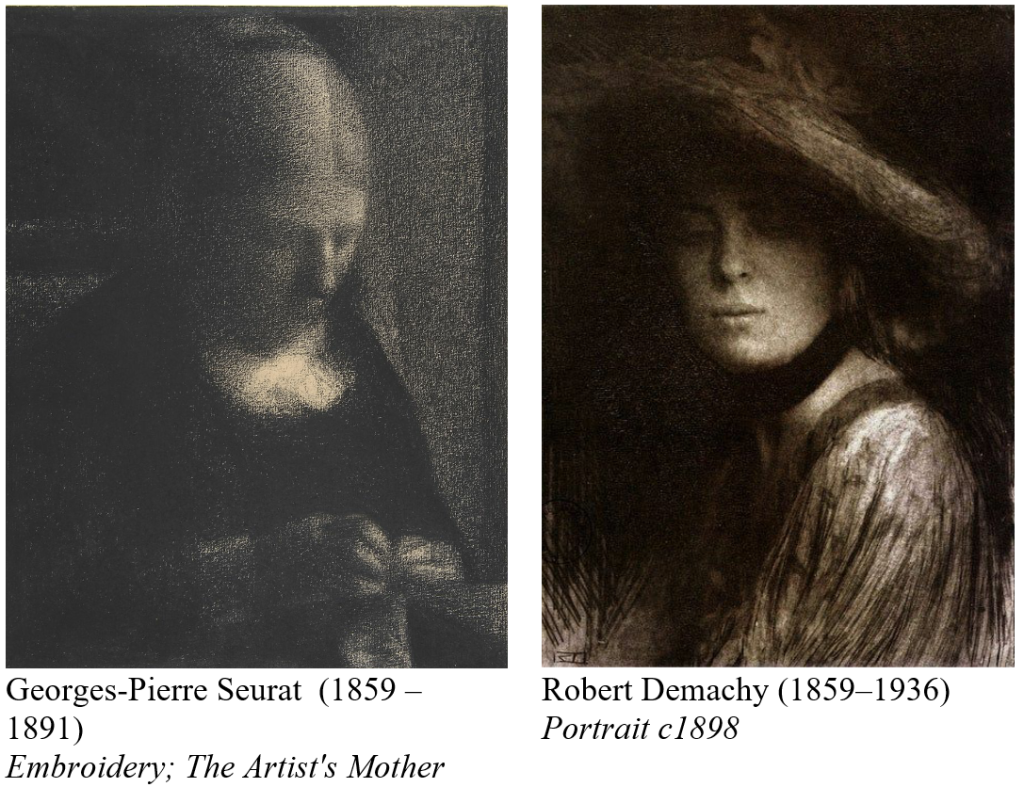PICTORIALISM (Flourished 1885-1915)

During the Reed-Harvest 1886
Even though P H Emerson had produced some beautifully framed naturalistic photographs, with the slight blurring which he considered essential to a natural appearance, other photographers wanted to blur even more, and thus make photographs which resembled paintings.

The Horse c. 1900
Eugene not only blurred parts of the image, but scratched the negative, thus showing dark needle marks, especially in the background.

Banks of the Seine 1906
This image includes selective blurring. Some parts, equally distant. are more blurred than others. This could not have been achieved by setting the lens slightly out of focus (as Emerson had advocated). Retouching by hand was essential for this effect.

The Kiss c.1905
Here too, there is a considerable amount of selective blurring.

Study in Red 1898
Demachy has introduced brushstrokes, especially in the background. This was something which the gum bichromate technique made possible, because the photographic print was made up of watercolour on paper.
Some photographers, who were sympathetic to Emerson’s ideas, pushed them a little further, using a variety of methods to blur the image. They frequently used printing techniques such as gum-bichromate. This produced an image made of watercolour on paper, and allowed the photographer to brush water over all or part of the image, and so to control blurring with great sensitivity. Some photographers even added brushstokes. Many of these works (though not all) ended up with so much retouching that they were almost painted pictures in themselves, and the approach became known as Pictorial Photography. It was, in effect, a type of painting, or at least half-way between painting and photography.
PAINTING AND PICTORIALISM

/visual-arts-cork.com gives an excellent summary of the Pictorial approach to photography:
In the history of photography, the term “pictorialism” refers to an international style and aesthetic movement that flourished in particular between 1885 and 1915. Involving some of the greatest photographers of the time, pictorialism was a style of fine art photography in which the camera artist manipulates a regular photo in order to create an “artistic” image. The Pictorialist movement emerged in response to the growth of amateur photography caused by the invention of easy-to-use camera equipment, such as the handheld amateur camera introduced by Kodak in 1888. At the time, dedicated photographers believed that the amateur “point-and-shoot” approach undermined the artistic nature of photography and the role of the photographer as craftsman. As a result, in order to safeguard their “art”, they adopted a more “professional” approach to photography (with or without manipulation in the darkroom), which involved the use of more complex cameras, as well as labour-intensive processes including gum bichromate printing, homemade emulsions and platinum prints. All of this allowed pictorialists to create a style of artistic photography in the form of a wide range of unusual, tonally subtle images.

